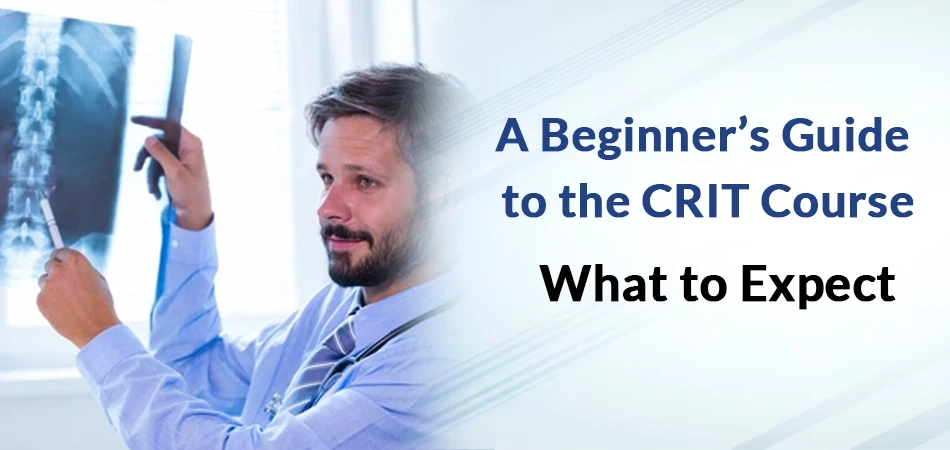A Beginner’s Guide to the CRIT Course: What to Expect

The main emphasis of the Radio and Imaging Technology Certificate Course is on the techniques and methods utilized to diagnose medical issues and carry out medical procedures for detecting or examining diseases. This field of medicine studies the entire human body structure and function in parts, used in creating functional images. Although organs and tissues can be inspected post-removal for medical reasons, it is generally categorized as pathology rather than medical imaging.
Radiological technology is employed to create medical images like X-rays, MRI scans, and CT scans. Students are prepared to help with the proper administration of X-ray and electrocardiogram procedures for patients.
What Covers in CRIT Course?
The Certified Radiology Imaging Technologist (CRIT course) is designed to provide advanced knowledge and skills for those looking to excel in the field of radiologic technology. Here’s what you can expect:
1. Course Structure
- Curriculum Overview The course typically covers topics such as advanced imaging techniques, radiation safety, patient care, and the latest technological advancements in radiology.
- Hands-On Training Expect practical labs and clinical experiences that allow you to apply theoretical knowledge in real-world settings.
2. Prerequisites
- Educational Background Generally, you’ll need a background in radiologic technology or a related field. Some programs may require you to hold a relevant certification before enrolling.
- Technical Skills Basic computer skills and familiarity with radiologic equipment will be beneficial.
3. Duration and Format
- Length The course duration can vary but typically lasts several months. Some programs may offer accelerated options.
- Delivery Mode Courses may be available in various formats, including online, in-person, or hybrid, providing flexibility based on your schedule.
4. Certification Preparation
- Exam Readiness The CRIT course is designed to prepare you for the certification exam. Expect review sessions, practice tests, and study resources to help you succeed.
- Continuing Education Some programs may also offer continuing education credits, which can be beneficial for maintaining certification.
5. Networking Opportunities
- Professional Connections The course often provides opportunities to meet industry professionals, which can help you build a network for future job opportunities.
- Mentorship Engaging with instructors and peers can lead to mentorship opportunities, further enhancing your learning experience.
Choose Ganesh Paramedical for CRIT Course
The CRIT course is a valuable step for those looking to advance their careers in radiologic technology. With a focus on both theoretical knowledge and practical skills, you’ll be well-prepared for the challenges of the field and the certification exam. Embrace the learning journey, and you’ll find it rewarding both professionally and personally
People may ask
Q1. Do paramedical courses require NEET?
Ans. No, NEET is not required for paramedical courses. However, a few colleges might have university entrance exams for students.
Q2. Is there any entrance exam for paramedical courses?
Ans. Admission to some of the paramedical courses is based on entrance exams. This includes JIPMER, NEET-UG, MHT CET, etc.
Q3. How many years is a Paramedical course?
Ans. Certificate courses go on for a duration of 1-2 years while degree courses are for 1-4 years.
Q4. Is paramedical a good career?
Ans. There are ample job opportunities for paramedical graduates and an increasing demand for trained people in these fields.

